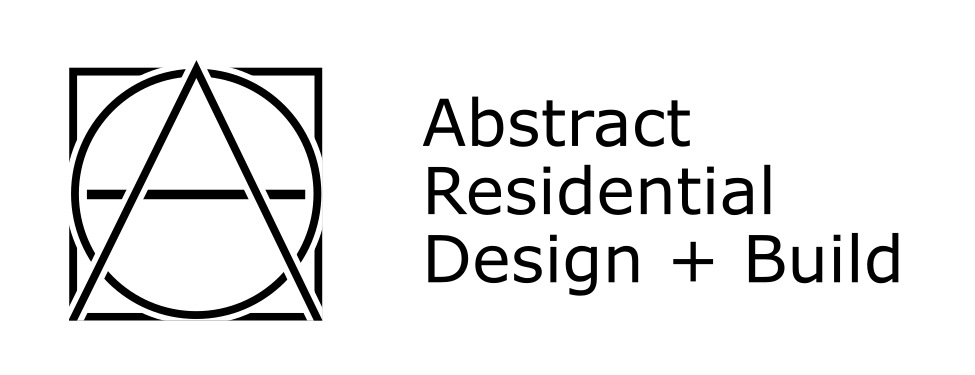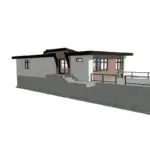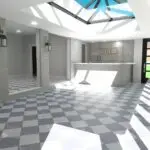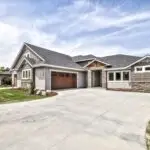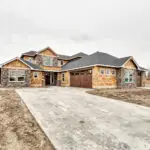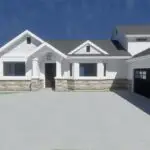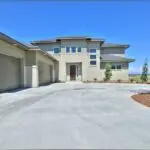Windows, Windows, & Glass. What’s To Know About Windows For Your Idaho Home

Table of Contents
- Intro
- Types of Windows
- Factors Effecting Window Efficiency
- Thermal Characteristics And Ratings
- Costs
- Window Frame Material Types
- Varying Climate Factors in Choosing Windows
- Frame Colors and Their Popularity
- Glass Types
- Manufacturers of Windows and Doors
- Signs of a Failed Window
- Conclusion
- References
I. Intro
Windows are an essential feature of any home, providing light, ventilation, and insulation. However, choosing the right windows can be a daunting task, given the variety of types, materials, and features available. In this post, we will discuss everything you need to know about windows, from their thermal characteristics, types, manufacturers, and signs of failure.
II. Types of Windows
There are several types of windows in a home, each with its unique design and functionality. Some popular types include:
- Single-Hung Windows: Single-hung windows have a fixed top sash and a movable bottom sash that slides up and down for ventilation.
- Double-Hung Windows: Double-hung windows have two movable sashes that slide up and down, offering better ventilation.
- Casement Windows: Casement windows have a single sash that opens outward, operated by a crank handle and are hinged on the side. They provide excellent ventilation and unobstructed views. Screens will be on the interior side of the home. Casements tend to have a higher Performance Rating and seal tighter than other operable windows, but the cost tends to be higher than other options
- Awning Windows: Awning windows are similar to a Casement, but with the hinge at the top. Awnings provide excellent functionality as they can be opened during light rain.
- Sliding Windows: Sliding windows have one or more movable sashes that slide horizontally, providing easy operation and space-saving design.
- Direct Set Windows: A fixed direct set window is a type of window that is designed to remain stationary and not open or close. It typically consists of dual or triple pane glass that is set directly into the frame of the window. The frame typically has a smaller frame width and fits a contemporary or modern style well.
- Sash Set Windows: A fixed sash set window is a type of window that is designed to look like a traditional Casement or single-hung window, but is fixed in place and does not open or close. It typically consists of dual pane glass held in place by a sash that is designed to match the style of the other windows in your home.
III. Factors Affecting Window Efficiency
The efficiency of a window is determined by several factors, including:
- Low-emissivity (LowE) coatings: These coatings reflect UV (heat) back into your home during the winter and reflect it outside during the summer, reducing your heating and cooling bills.
- Dual-pane vs. triple-pane: Windows with multiple panes of glass provide better insulation than single-pane windows. Triple-pane windows offer even more insulation than dual-pane windows.
- Gas fill: The space between the panes of glass can be filled with argon, krypton, or air. Krypton is a better insulator than argon, which is better than air. Argon is the most common and least expensive option.
- Frame type: The frame of a window can also affect its efficiency. Vinyl frames provide better insulation than aluminum frames. Aluminum clad wood windows are typically more efficient than vinyl or fiberglass.
IV. Thermal Characteristics and Ratings
When selecting windows for your home, it’s important to consider their thermal characteristics and ratings. This can impact your home’s comfort and energy efficiency and your energy bills. Here are some key factors to consider:
- U-Factor: This measures the rate of heat transfer and indicates how well a window can keep heat inside your home. The lower the U-factor, the better the window’s insulation properties. A low U-factor is particularly important in colder climates. Be sure the U-factor rating is for the entire unit and not measured just from the center of glass. A typical rating for a low U-factor window would be 0.28 or less.
- Solar Heat Gain Coefficient (SHGC): This measures how much UV (heat) from the sun passes through the window. The lower the SHGC, the less heat the window allows in. A low SHGC is particularly important in warmer climates. A typical rating for a low SHGC window would be in the 0.26 or lower range.
- Air Infiltration: This measures the amount of air that can pass through the window assembly. The lower the air leakage rate, the more airtight the window is and more efficient.
- Performance Grade: This is a rating system that measures the overall energy performance of a window. Performance Grade takes into account a window’s U-factor, SHGC, air infiltration, security, and Design Rating (think hurricanes and tornadoes), to provide an overall rating. This rating can help you compare different windows and select the most energy-efficient option for your home.
The Performance Grade is also an important factor to consider when selecting windows because it takes into account multiple factors that impact a window’s energy efficiency. By selecting windows with a high Performance Grade, you can improve your home’s overall performance and potentially save money on your energy bills.

V. Costs
When it comes to the cost of windows, the type of material used plays a significant role. I would suggest you buy the best window that you can afford. Here’s a breakdown of the average cost per window for each of the three most common materials:
- Vinyl windows: The average cost for a standard-sized vinyl window ranges from $300 to $600, with higher-end models costing up to $800 or more.
- Fiberglass windows: The average cost for a standard-sized fiberglass window ranges from $500 to $1,500, with higher-end models costing up to $2,500.
- Aluminum clad wood windows: The average cost for a standard-sized aluminum clad wood window ranges from $800 to $1,500, with higher-end models costing up to $3,000.
Keep in mind that these are just average costs, and the actual cost of a window can vary based on factors such as size, style, and features. It’s always a good idea to get quotes from multiple window manufacturers to get a better sense of the costs involved.
VI. Window Frame Material Types
Windows can be made of various materials, each with its unique benefits and drawbacks. Some popular materials include:
- Vinyl: Vinyl windows offer low maintenance, excellent insulation, and affordability but may not be as durable or customizable as other materials.
- Fiberglass: Fiberglass windows offer durability and design flexibility with color options not available in vinyl, but can be expensive.
- Aluminum Clad Wood: Aluminum clad wood windows offer the durability and low maintenance of aluminum and the beauty and insulation of wood.
- Aluminum: I would avoid aluminum windows unless they are thermally broken thermally rated very high. Aluminum windows are not the same as what you may have seen in the past; single pane, energy sucking, and ugly. They are much improved, more efficient, and look very nice.
- Steel: You will only see these windows on very high end homes. They are very expensive.
VII. Varying Climate Factors in Choosing Windows
The climate of your area is a crucial factor to consider when choosing windows. Different types and materials of windows can perform better or worse in varying climates. For example, in cold climates, windows with low U-factor ratings and high SHGC ratings can help reduce heat loss while allowing solar heat gain. In hot climates, windows with low SHGC ratings and high VLT ratings can provide good daylighting while reducing heat gain. Triple pane glass in high elevations and extreme cold can help hold the heat in well. Additionally, windows with proper insulation and sealing can help improve comfort and energy efficiency in any climate.
VIII. Frame Colors and Their Popularity
The color of window frames can significantly impact the aesthetics and curb appeal of your home. Some popular frame colors include:
- White: White frames are timeless and classic, offering a clean and bright look that complements any architectural style.
- Black: Black frames offer a bold and modern look that contrasts well with lighter colored walls and trim.
- Bronze: Bronze frames offer a warm and sophisticated look that blends well with natural materials like wood and stone.
- Gray: Gray frames offer a neutral and versatile look that can work with any color scheme and style.
IX. Glass Types
The type of glass used in windows can impact their performance, safety, and aesthetics. Some common glass types include:
- Low-E Insulated Glass: Low-emissivity (Low-E) glass has a thin metallic coating that reflects heat and UV rays while allowing visible light to pass through. It offers excellent energy efficiency and UV protection. Insulated glass consists of two or more panes of glass separated by a spacer and filled with an insulating gas. It offers excellent energy efficiency, noise reduction, and condensation control.
- Tempered Glass: Tempered glass is heat-treated to increase its strength and safety. It breaks into small, rounded pieces instead of sharp shards, reducing the risk of injury.
- Obscure Glass: Obscure glass has a textured or frosted surface that provides privacy and diffuses light.

X. Manufacturers of Windows and Doors
Several manufacturers offer high-quality windows and doors, each with its unique features and benefits. I would suggest you use a window brand that you have heard of before. Window manufacturers that are new to the market or that make bad business decisions tend not stay in business long and when this happens you will lose your service and warranty leaving you stuck with the problem. Some popular manufacturers include:
- Pella Windows & Doors: Pella offers a high end, energy-efficient, and customizable windows and doors in wood, fiberglass, and vinyl.
- Andersen Windows & Doors: Andersen offers a wide range of windows and doors in various materials, styles, and colors.
- Marvin Windows & Doors: Marvin offers high-end and customizable windows and doors in wood, aluminum clad wood, and fiberglass.
- Milgard Windows & Doors: Milgard offers affordable and energy-efficient windows and doors in vinyl, fiberglass, and aluminum.
XI. Signs of a Failed Window
Over time, windows can experience wear and tear, leading to various issues that can impact their performance and safety. Some signs of a failed window include:
- Drafts and Air Leaks: Drafts and air leaks around the window frames and sashes can indicate gaps and cracks that need to be sealed.
- Foggy or Cloudy Glass: Foggy or cloudy glass can indicate a failed seal, allowing moisture to accumulate between the panes.
- Difficulty Operating: Difficulty opening or closing the window sashes can indicate wear and tear or malfunctioning hardware.
- Condensation: Condensation on the glass or frames is not typically indicative of window failure and is more likely indication of high humidity levels in the home, very cold temps outside, and possibly poor ventilation in the home.
XII. Conclusion
Choosing the right windows for your home can have a significant impact on your comfort, energy efficiency, and curb appeal. By considering factors such as type, material, efficiency, cost, and climate, you can make an informed decision that meets your needs and preferences. Whether you prefer aluminum clad wood, vinyl, or fiberglass, there is a window type and material that can suit your home and budget. By following these tips and recommendations, you can ensure that your windows provide optimal performance and aesthetics for years to come. So go ahead and explore the world of windows and let me help you find the perfect ones for your home!
References:
For further education on Windows you can check out the following;
I. Window Efficiency:
- “Energy-Efficient Windows” by Department of Energy: https://www.energy.gov/energysaver/design/windows-doors-and-skylights/energy-efficient-windows
- “Window Energy Ratings” by Efficient Windows Collaborative: https://www.efficientwindows.org/window-ratings/
II. Thermal Characteristics and Ratings:
- “WDMA Hallmark Certification” by Window & Door Manufacturer’s Association: https://www.wdma.com/wdma-hallmark-certification
- “Window Performance Ratings” by American Architectural Manufacturers Association (AAMA): https://fgiaonline.org/homeowners/resources
III. Manufacturers of Windows and Doors:
- “Top Window Manufacturers” by Window + Door: https://www.windowanddoor.com/top-100-manufacturers-2021-top-100-manufacturers
